Each car in the following list tried very hard to introduce a totally new commercial niche and amass a large enough following so that it could get a proper return on the initial investment. Unfortunately, they didn't manage to hit either of those goals, but I figure they still deserve our recognition.
In the late 90's, early 00's, the business leitmotif for some car companies became "retro" – otherwise known as "how can we bring back some of our older customers while also appealing to hip-conscious millennials." This is pretty much how Volkswagen's New Beetle, BMW's current MINI (not to be confused with the original Mini), and even modern muscle cars like the Mustang, Challenger and Camaro came to be looking so nostalgic instead of introducing a progressive design language like everyone else.Volvo 480 and Volvo C30
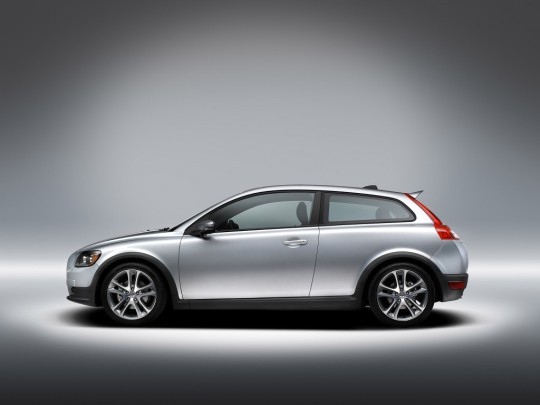 The first on this list is Volvo, who tried not once, but twice in three decades to introduce some retro design spice into its (at the time) classic lineup design. Launched at the 1986 Geneva Motor Show, the 480 was Volvo's first ever front-wheel-drive car. Essentially a mix between a shooting brake and a three-door hatchback, the model was the result of no less than six years of planning and R&D, with Volvo's focus being on the then-newly established yuppie (young urban professionals) market segment.
The first on this list is Volvo, who tried not once, but twice in three decades to introduce some retro design spice into its (at the time) classic lineup design. Launched at the 1986 Geneva Motor Show, the 480 was Volvo's first ever front-wheel-drive car. Essentially a mix between a shooting brake and a three-door hatchback, the model was the result of no less than six years of planning and R&D, with Volvo's focus being on the then-newly established yuppie (young urban professionals) market segment.
Although rather modern at the time, the Volvo 480's overall design had a substantially retro motif, meant to bring back memories of the sexy P1800 ES – which was a shooting brake version of the P1800 made famous by Roger Moore in "The Saint." Both cars had a similar profile, with a low-slung roof and a frameless glass rear hatch that went almost in a straight line from the roof to the rear bumper.
Apart from traction going exclusively to the front, the 480 was also the first and only Volvo to feature those delightfully 1980's pop-up headlights. Suspension settings were dialed in by none other than Lotus, while the engine lineup consisted of a host of Renault-sourced four-cylinders in the beginning. In 1995, after a nine-year production run and a little over 80,000 units produced, the Volvo 480 was discontinued without a new generation taking its place…
Until 2006 that is, when the Volvo C30 came to be. Yet another compact, three-door, hatchback, the C30 also made use of a rear design harking back to the P1800 ES (and the 480), although the overall styling and part of its safety features were based on the 2001 Volvo SCC concept. Originally a pretty good seller for such a niche vehicle, the C30 didn't manage to keep enough momentum over the years either, with sales slumping toward the end of its career. Production ended in 2012, with no direct replacement planned.Nissan BE-1, S-Cargo, Pao and Figaro
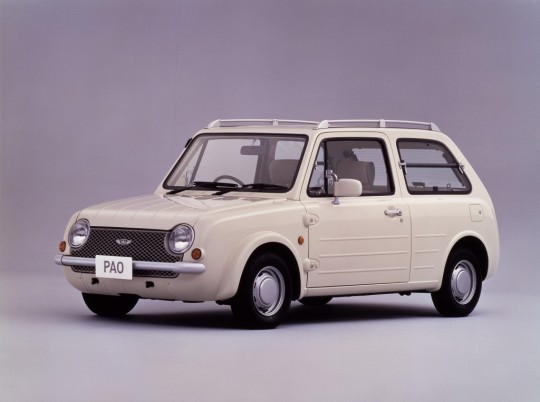 Back in the late 1980s, Nissan was in a somewhat better shape than it is today, especially since unlike now it was a completely independent carmaker. This hard-to-keep freedom allowed Nissan at one point to take more chances with its products. Its somewhat conservatively design model lineup was beginning to slowly but surely lose market share to Honda, so Nissan's head honchos took a pretty radical decision. They created a small skunkworks team, whose main focus was to turn the tide around with some cleverly designed small cars.
Back in the late 1980s, Nissan was in a somewhat better shape than it is today, especially since unlike now it was a completely independent carmaker. This hard-to-keep freedom allowed Nissan at one point to take more chances with its products. Its somewhat conservatively design model lineup was beginning to slowly but surely lose market share to Honda, so Nissan's head honchos took a pretty radical decision. They created a small skunkworks team, whose main focus was to turn the tide around with some cleverly designed small cars.
An entire decade before the Volkswagen New Beetle and approximately 14 years before the MINI came to be, the Nissan BE-1 was the first retro mini car. Its design was largely evocative of the original Austin Mini, while all the technical bits came from the Nissan/Datsun Micra K10. Unfortunately, its success is simply incomparable with the nostalgic little buggers that populate our mall parking lots today, since only 10,000 units were built between 1987 and 1988.
The BE-1 was the first of four retrograde Nissans designed by the aforementioned skunkworks team. Also based on the Micra K10, the Nissan Pao looked like the punk-rock nephew of the Renault 4, but also had some Citroen 2CV design features, which may or may not be the reason for its mildly larger success (over 50,000 units produced between 1989 and 1990).
Probably thinking that third time's a charm, Nissan also unveiled the Figaro in 1991, a tiny sports car whose design was reminiscent of the Datsun Fairlady series of roadsters from the 1960s, which were themselves similar with British roadsters of the time. Despite populating an even smaller niche, the Figaro was sold in 20,000 units between 1991 and 1992, twice better than the BE-1.
By far the quirkiest retro attempt by Nissan was the S-Cargo, a pocket-sized cargo van that was not unlike a modern Citroen 2CV Fourgonette from most angles. Its platform also being based on the Micra K10 but using a larger engine from the Nissan Pulsar, the S-Cargo was built in just 10,600 units between 1989 and 1990. Its name was a wordplay on cargo van and the French word for snail, which is escargot – pretty clever considering it kind of looked like one. None of these four predecessors to modern retro cars had a direct replacement, with Nissan going for an entirely different styling direction in the 1990s.BMW Z8
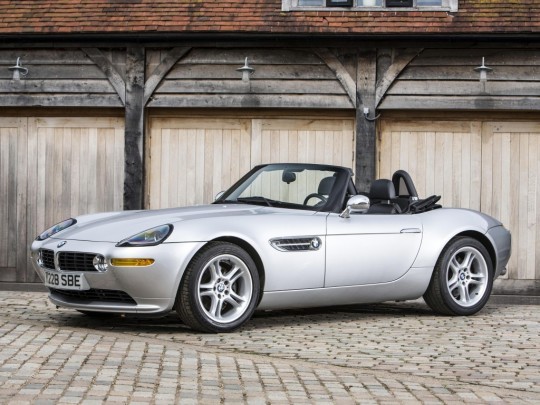 Probably the sexiest car on this list, the BMW Z8 Roadster had everything going for it when it went on sale in 1999. With an artistic design penned by none other than Henrik Fisker – of Aston Martin and Fisker Karma fame – the Z8 was based on the BMW Z07 concept, which dropped a considerable number of jaws at the 1997 Tokyo Motor Show. Its design clearly harked back to the gorgeous BMW 507, while the all-aluminum spaceframe chassis and BMW M5 E39 engine should have resulted in killer sales.
Probably the sexiest car on this list, the BMW Z8 Roadster had everything going for it when it went on sale in 1999. With an artistic design penned by none other than Henrik Fisker – of Aston Martin and Fisker Karma fame – the Z8 was based on the BMW Z07 concept, which dropped a considerable number of jaws at the 1997 Tokyo Motor Show. Its design clearly harked back to the gorgeous BMW 507, while the all-aluminum spaceframe chassis and BMW M5 E39 engine should have resulted in killer sales.
Unfortunately, not too many people agreed on its theoretical qualities, as only 5,703 BMW Z8s were built between 1999 and 2003, with the Bavarians deciding not to invest in a worthy replacement model. Its "instant classic" styling probably proved to be a bit too much for Bimmer buyers at the time, not to mention that the contemporary Mercedes-Benz SL was firmly established as the car to buy in the Z8's price range.Chrysler PT Cruiser, Plymouth Prowler and Chevrolet HHR
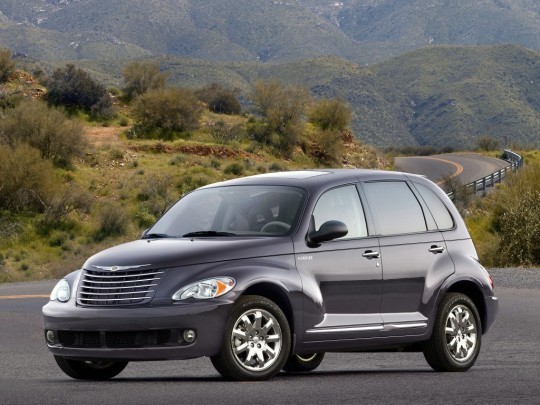 By coincidence, all these three American attempts at mixing old-school with modern were designed by the same man, Brian Nessbit. While successful at the beginning of production, neither proved itself worthy of a second generation, which is a bit of a bummer if you ask me. Originally developed to become a model in the now defunct Plymouth lineup, the PT Cruiser was a modern take on a lot of 1930s cars, but its closest doppelganger was probably the Chyrsler Airflow Sedan.
By coincidence, all these three American attempts at mixing old-school with modern were designed by the same man, Brian Nessbit. While successful at the beginning of production, neither proved itself worthy of a second generation, which is a bit of a bummer if you ask me. Originally developed to become a model in the now defunct Plymouth lineup, the PT Cruiser was a modern take on a lot of 1930s cars, but its closest doppelganger was probably the Chyrsler Airflow Sedan.
Underneath the pretty bodywork was a mix of parts from the Dodge bin, most of them coming from the Neon, but the PT Cruiser was largely a stand-alone model. Combining this with the highly niche styling resulted in slower sales toward the end of the model's career, prompting Chrys
ler to gradually discontinue it by 2010, after a ten-year run that saw 1.35 million units being built.
The Plymouth/Chrysler Prowler suffered a somewhat similar fate, but not for the same reasons. The RWD convertible sports car was pretty high-tech for its time, using a transaxle transmission layout and many aluminum parts for its chassis, but the choice of going for a V6 instead of a V8 as a means of propulsion saw many prospective buyers turn away. Despite the popularity of its looks, only 11,702 Prowlers were built between 1997 and 2002.
A few years later, looking at the initial success of the PT Cruiser and having Brian Nessbit on board, GM also dipped its toes in the retro-styling market with the Chevrolet HHR. The HHR was a compact MPV that banefited from soaring sales in the first few years of production, but it turned stale even faster than the PT Cruiser.
Its exterior design was largely inspired by the 1940s Chevrolet Suburban, but apparently that didn't prove to be as forward-thinking as GM had hoped. A little over half a million were sold between 2005 and 2010, when the HHR was replaced by a number of non-retro cars, including the Chevrolet Traverse, Trax and Orlando.2001 Ford Thunderbird
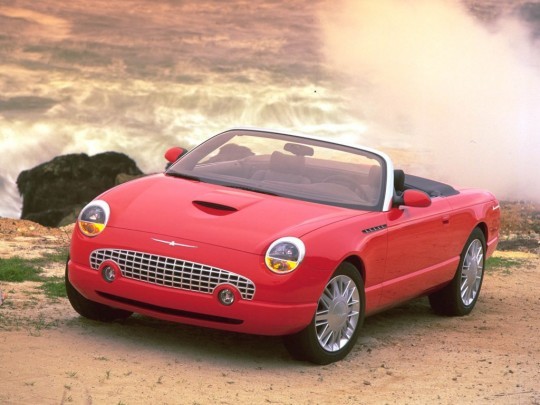
A few years before Ford struck gold with the retro-inspired fifth-generation Mustang, it tried resurrecting an equally-loved model from its prodigious sports car past, the Thunderbird. Based on the same platform as the Jaguar S-Type, XF and Lincoln LS, the eleventh generation of the Thunderbird received rave reviews and accumulated a number of awards when it went on sale in 2000. Its styling was a modern take on the original 1955 Thunderbird, which many saw as the quintessential American personal luxury car at the time.
This translated into a great deal of sales, but only for the first couple of years, after which buyers started to quickly turn away. The new Thunderbird went from "rock star fame" to "nobody knows it exists anymore" so fast that it caught even Ford by surprise. After just four years in production and a total of 68,098 units built, the plug was pulled and no successor came after. Maybe the twelfth generation will fare a little better, especially since modern retro design seems to be going strong nowadays, but I'm not holding my breath that it will happen very soon.








